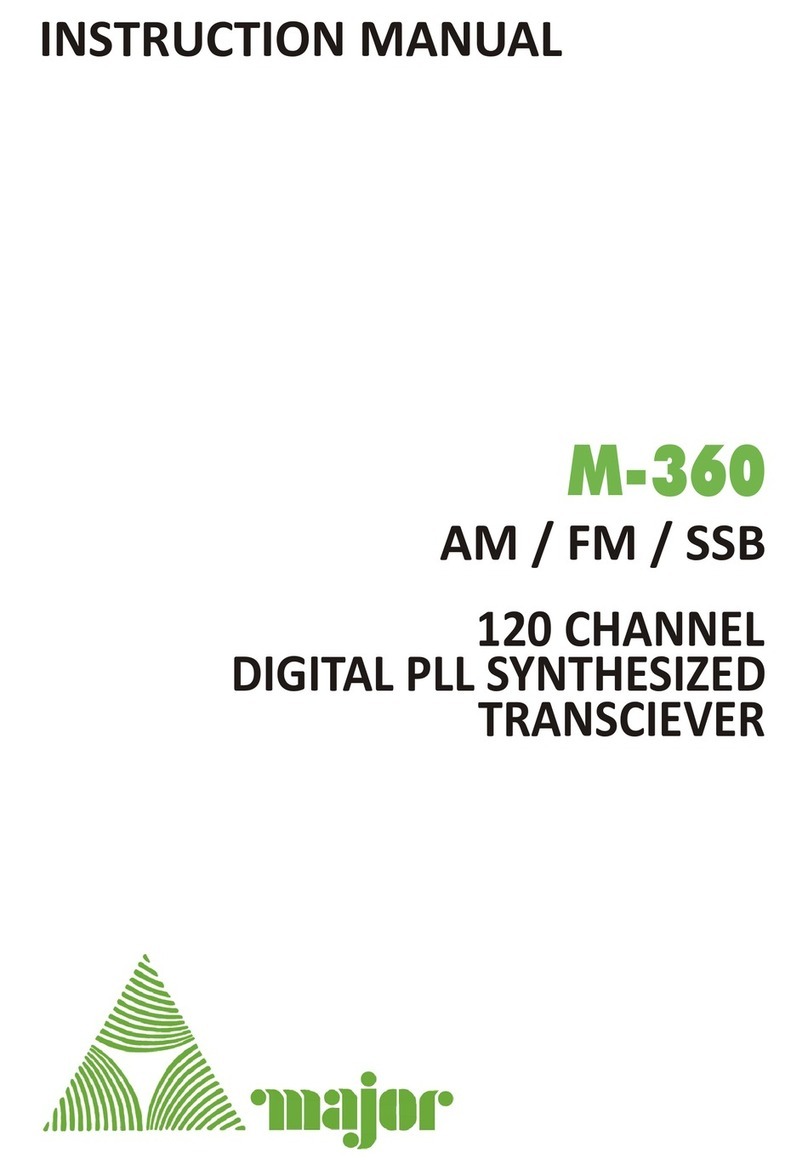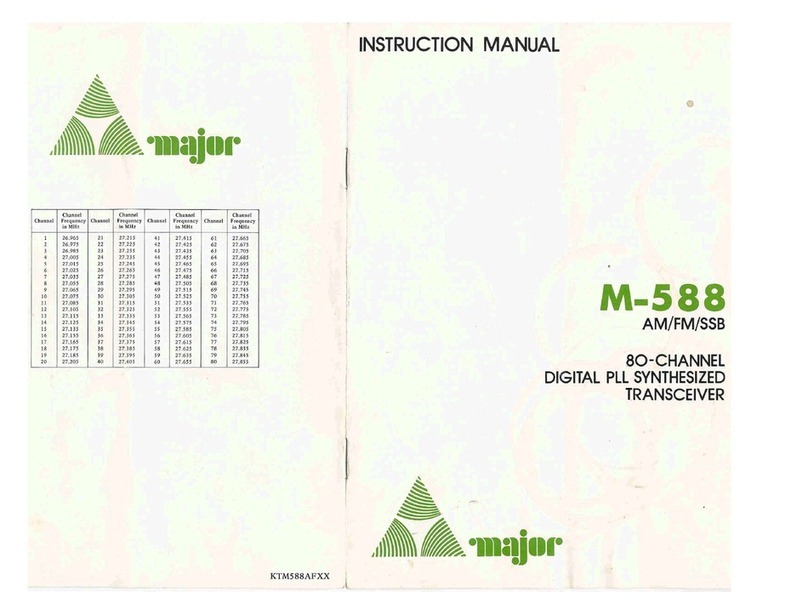
DC POWER CONNECTION
The transceiver is designed to operate
from a battery source of 13.8 volts DC,
in vehicles [or boats] employing either
negative or positive ground electrical
system. The fused DC power cable sup-
plied is used to make the necessary power
connection to the transceiver. The red
[fused] lead is connected to the positive
[+] side of the electrical system in the
vehicle, and the black lead is connected
to the negative [—] side of the system.
In a negative ground vehicle: Connect
the red lead to the “hot” point in the
electrical system [battery positive] , and
the black lead to the metal firewall or
any other point that is connected to the
vehicle chassis [battery negative] .
In a positive ground vehicle: Connect the
black lead to the “hot” point in the
electrical system [battery negative] , and
the red lead to the metal firewall or any
other point that is connected to the
vehicle chassis [battery positive] .
A suitable point in the vehicle for con
nection to the “hot” battery side can
usually be found on the fuse block. Since
the transceiver draws a maximum of only
1.6 amperes of current, you can use a
terminal which supplies power to the
car radio or other accessory [use the un-
fused input side sińce the DC power cable
is equipped with its own fuse] . Tо sim-
plify connection to this terminal, attach
an alligator [spring] clip to the power
CB ANTENNAS
The results obtained with your trans
ceiver will be greatly determined by the
efficiency of the antenna system used.
Due to the complexity of the subject, it is
not with in the scope of this manuał to
OPERATION INSTRUCTIONS
Make sure the transceiver is properly
lead first and then clamp it onto the
terminal selected. Note that the con
nection to this point will ensure that DC
power to the transceiver is automatically
eut off when the vehicle ignition is turned
off.
ANTENNA CONNECTION
The lead-in cable from the CB antenna
should be terminated with a PL- 59 type
male connector. Attach to the matching
antenna input connector at the rear of
the transceiver.
RG-58/U cable is generally used to con
nect the CB antenna to the transceiver.
The cable should be terminated with a
PL- 59 connector for connection to the
antenna input on the transceiver.
In a base station installation, an excep-
tionally long lead-in cable may be re-
quired. When lengths of over 50 feet [15
meters] are necessary, RG-8/U coaxial
cable is more suitable than RG-58/U
since it offers lower loss.
MICROPHONE BRACKET
This small size of the transceiver prohibits
mounting a microphone bracket directly
to the chassis. We recommend, therefore,
that the microphone bracket be attached
to the dashboard of the vehicle or in any
other convenient location. If one desires
to do this with ou t drilling holes, a magne-
tic mounting plate may be used and the
microphone bracket attached to it.
provide detailed information on antenna
Systems. We suggest that you purchase
one of the numerous books available
which covers this subject in greater detail.
installed as indicated proviously, and that
6





























